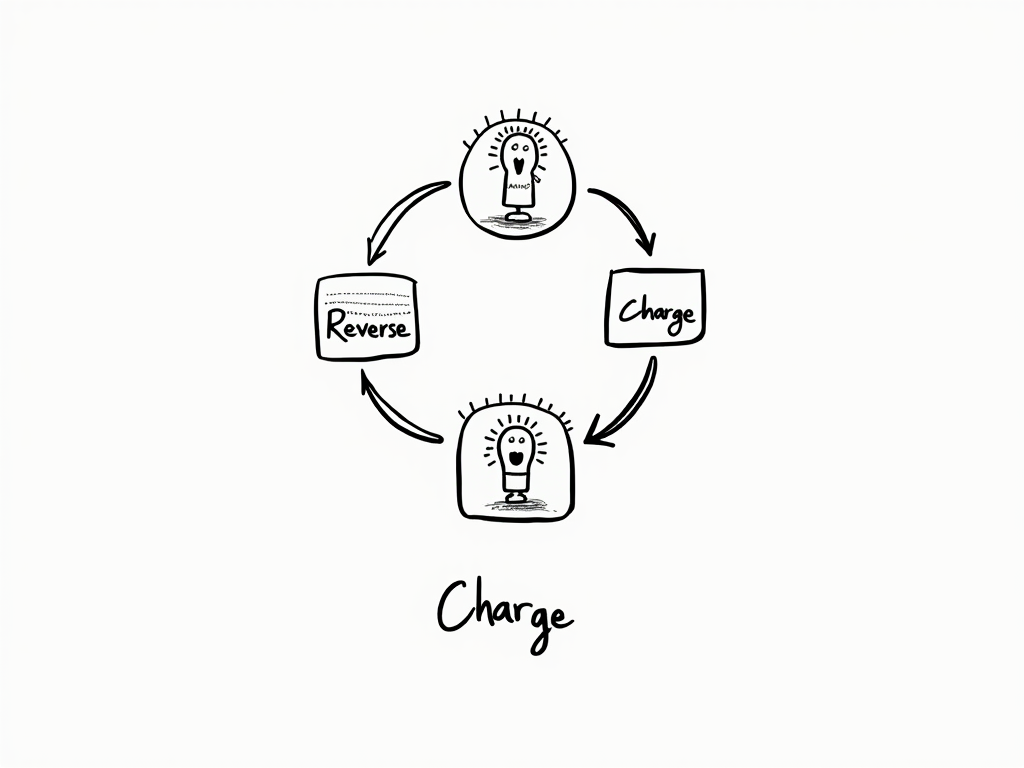
VAT for Freelancers in Estonia: Registration Requirements and Strategic Considerations
Reading time: 12 minutes
Table of Contents
- Introduction to Estonian VAT System
- VAT Registration Thresholds and Requirements
- Benefits and Drawbacks of VAT Registration
- Voluntary VAT Registration: Strategic Considerations
- VAT Compliance and Filing Procedures
- Digital Nomads and Cross-Border VAT Implications
- Practical VAT Management for Freelancers
- Conclusion
- Frequently Asked Questions
Introduction to Estonian VAT System
Navigating the Estonian VAT landscape as a freelancer often feels like walking through a dense forest with a compass but no map. You know the general direction, but the path isn’t always clear. Let’s clarify that path.
Estonia operates one of Europe’s most straightforward tax systems, yet VAT (Value Added Tax) remains an area where many freelancers struggle with uncertainty. Should you register? When is it mandatory? What are the strategic implications of your decision?
The Estonian VAT system operates under the European Union’s VAT Directive, with a standard rate of 20% and reduced rates of 9% for specific goods and services. As a freelancer, understanding this system isn’t just about compliance—it’s about making informed financial decisions that can significantly impact your business operations and profitability.
VAT Registration Thresholds and Requirements
The fundamental question for most freelancers is simple: when am I required to register for VAT in Estonia? Here’s the straightforward answer:
Mandatory Registration Threshold
In Estonia, VAT registration becomes mandatory when your taxable turnover exceeds €40,000 within a calendar year. This threshold applies to your taxable supplies in Estonia, regardless of whether you’re selling to businesses or consumers.
What qualifies as taxable turnover? Essentially, it includes most goods and services you provide in Estonia, with some exceptions for exempt activities. The calculation is straightforward:
- Include: All standard-rated and reduced-rate supplies
- Exclude: VAT-exempt supplies (like certain educational services)
- Exclude: Supplies where the reverse charge mechanism applies
Quick Scenario: Imagine you’re a graphic designer earning €3,500 monthly from Estonian clients. By August, you’ll have exceeded €35,000, giving you only a small buffer before reaching the mandatory registration threshold. This is precisely when you should start planning your VAT approach.
Tracking Your Threshold
The €40,000 threshold is calculated on a rolling basis, meaning you need to monitor your turnover for the preceding 12 months. Once you cross this threshold, you must register for VAT within 3 business days.
Many freelancers make the critical mistake of waiting until year-end to assess their position. By then, you might have been operating in non-compliance for months. The Estonian Tax and Customs Board has become increasingly vigilant about identifying businesses that should be VAT-registered but aren’t.
Pro Tip: Set up a simple spreadsheet or use accounting software that automatically tracks your taxable turnover against the threshold and alerts you when you’re approaching the €40,000 mark.
Benefits and Drawbacks of VAT Registration
Understanding whether VAT registration makes strategic sense requires weighing several factors beyond mere compliance. Let’s break down the realistic pros and cons:
Advantages of VAT Registration
VAT registration isn’t just an administrative burden—it can offer tangible benefits:
- Input VAT Recovery: You can reclaim VAT on business expenses, potentially significant for freelancers with high operational costs.
- Professional Credibility: A VAT number signals established business status to clients, particularly valuable when working with larger companies.
- Competitive Positioning: For B2B services, your VAT status generally doesn’t impact your pricing competitiveness as business clients can recover VAT.
- EU Market Access: A VAT number simplifies cross-border transactions within the EU and enables participation in the One Stop Shop (OSS) system.
According to a 2022 survey by the Estonian Chamber of Commerce, 67% of small businesses reported that VAT registration positively impacted their ability to secure contracts with larger enterprises, as it signaled fiscal responsibility and business legitimacy.
Disadvantages of VAT Registration
Let’s be candid about the challenges:
- Administrative Burden: Regular VAT returns (typically monthly in Estonia) require diligent record-keeping and compliance processes.
- Cash Flow Considerations: You must collect and remit VAT regardless of whether your clients have paid you, potentially creating timing mismatches.
- B2C Pricing Pressures: If you primarily serve consumers who cannot recover VAT, adding 20% to your prices may affect your competitiveness.
- Compliance Costs: While Estonia’s e-filing system is efficient, you may still incur costs for accounting support or software.
As Katrin Tammik, an Estonian tax advisor, notes: “For many freelancers, VAT registration isn’t just about following rules—it’s a strategic business decision with real financial implications that should be analyzed in the context of your specific business model.”
Voluntary VAT Registration: Strategic Considerations
Even if you’re below the €40,000 threshold, voluntary VAT registration might be advantageous. Let’s explore when it makes strategic sense:
Client Composition Analysis
The first strategic question to ask is: who are your clients?
- B2B Focus: If your clients are primarily VAT-registered businesses who can recover input VAT, your VAT registration typically won’t impact their costs.
- B2C Focus: If you primarily serve consumers, adding 20% VAT to your prices could affect your competitiveness, as they can’t recover this cost.
- International Clients: For services to EU businesses, the reverse charge mechanism often applies, where your client accounts for VAT in their country.
Case Study: Maria, an Estonian web developer, voluntarily registered for VAT when only 70% of her annual €30,000 turnover came from business clients. The remaining 30% came from consumers. While she needed to carefully adjust her pricing strategy for B2C clients, the ability to reclaim approximately €2,800 in annual input VAT on business expenses (software subscriptions, equipment, co-working space) outweighed the disadvantages.
Input VAT Recovery Potential
Calculate your potential input VAT recovery. Freelancers with significant business expenses might benefit substantially:
| Expense Category | Typical Annual Cost (€) | VAT Rate | Recoverable VAT (€) | Strategic Consideration |
|---|---|---|---|---|
| Equipment & Technology | 3,000 | 20% | 600 | Higher in setup years |
| Software Subscriptions | 1,200 | 20% | 240 | Consistent annual benefit |
| Workspace (Co-working/Office) | 2,400 | 20% | 480 | Significant for office-based freelancers |
| Professional Services | 1,500 | 20% | 300 | Includes accounting, legal, consulting |
| Travel & Accommodation | 2,000 | 9-20% | ~350 | Partially recoverable depending on purpose |
The above example illustrates potential annual VAT recovery of approximately €1,970 for a typical freelancer. Compare this against the administrative costs of VAT compliance when making your decision.
VAT Compliance and Filing Procedures
Understanding Estonia’s VAT compliance requirements is essential for making an informed registration decision. The country’s digital-first approach simplifies many aspects, but requires discipline and understanding.
Registration Process
Registering for VAT in Estonia is streamlined through the e-Business Register:
- Log in to the e-Business Register using your Estonian ID card, Mobile ID, or Smart ID
- Select your business entity and access the “Applications” section
- Choose “Application for registration as a person liable to value added tax”
- Complete the application, indicating whether registration is mandatory or voluntary
- Submit the application (processing typically takes 3-5 business days)
Upon successful registration, you’ll receive a VAT number with the prefix “EE” followed by your business registry code. This number must appear on all your invoices once registered.
Filing Requirements and Deadlines
Estonia’s VAT compliance calendar is structured as follows:
- Filing Frequency: Monthly by default, with possibilities for quarterly filing for smaller businesses (upon application)
- Submission Deadline: 20th day of the month following the reporting period
- Payment Deadline: Same as the filing deadline (20th day)
- Filing Method: Electronic submission through the e-Tax Board (e-MTA)
The Estonian VAT return (Form KMD) requires reporting sales and purchases by different VAT rates and categories. While the form itself is relatively straightforward, the accuracy of your underlying accounting records is crucial.
Well-maintained bookkeeping significantly reduces compliance hassles. As Martin Huberg, Estonian tax specialist, points out: “The efficiency of Estonia’s VAT system depends on consistent record-keeping. Most compliance issues stem not from complex regulations but from poor documentation practices.”
Digital Nomads and Cross-Border VAT Implications
For digital nomads and freelancers with international clients, Estonian VAT considerations become more complex but also offer unique opportunities.
Place of Supply Rules
Understanding where your services are “supplied” for VAT purposes is critical. The general rules for B2B and B2C services differ significantly:
- B2B Services: Generally deemed supplied where the client is established, with the client typically accounting for VAT through the reverse charge mechanism
- B2C Services: Generally deemed supplied where the supplier (you) is established, meaning Estonian VAT may apply regardless of where your customer is located
- Digital Services to EU Consumers: Special rules apply, with VAT charged based on the customer’s location
Case Study: Thomas, an Estonian-based freelance software developer, serves clients across Europe. For his B2B clients in Germany and France, he doesn’t charge Estonian VAT, instead noting “reverse charge” on his invoices. For his B2C clients within Estonia, he charges 20% VAT. For his B2C clients elsewhere in the EU, he uses the OSS (One Stop Shop) system to report and pay VAT at the rates applicable in his customers’ countries, all through the Estonian Tax Board. This approach has simplified his compliance while enabling him to serve diverse client segments.
The One Stop Shop (OSS) Advantage
The EU’s One Stop Shop system, accessible to Estonian VAT-registered freelancers, offers significant administrative benefits for those providing B2C digital services across the EU. Instead of registering in each customer country, you can:
- Register for the OSS through the Estonian Tax Board
- Charge VAT at the rate applicable in each customer’s country
- Submit a quarterly OSS return alongside your regular Estonian VAT returns
- Make a single payment covering all EU VAT obligations
This system is particularly valuable for digital freelancers, software developers, online consultants, and content creators with a widespread European consumer base.
Practical VAT Management for Freelancers
Beyond understanding regulations, implementing practical VAT management processes is essential for minimizing administrative burden while ensuring compliance.
Invoicing Requirements
Estonian VAT-compliant invoices must contain specific elements:
- Sequential invoice number
- Issue date
- Your business name, address, and registry code
- Your VAT number (with EE prefix)
- Client’s name, address, and VAT number (if applicable)
- Description of goods/services provided
- Quantity and date of supply
- Price per unit excluding VAT
- Total amount excluding VAT
- VAT rate applied and VAT amount
- Total amount including VAT
- Special notations where applicable (e.g., “reverse charge”, “VAT exempt”)
Modern invoicing software can automate these requirements, reducing errors and saving time. Popular options among Estonian freelancers include Invoicely, Zervant, and local solution Merit Aktiva.
Record-Keeping Best Practices
Effective VAT management requires disciplined record-keeping:
- Digital Documentation: Maintain electronic copies of all sales and purchase invoices, organized by month and quarter
- Transaction Categorization: Classify transactions by VAT rate and treatment (standard rate, reduced rate, zero-rated, exempt, reverse charge)
- Regular Reconciliation: Compare your VAT records with bank statements and accounting ledgers monthly to identify discrepancies early
- Documentation of Special Transactions: Maintain additional documentation for complex situations (cross-border services, mixed-use purchases)
Maris Leemets, an accountant specializing in freelancer taxation, advises: “The frequency of VAT errors decreases dramatically when freelancers implement a weekly routine for organizing and categorizing transactions, rather than scrambling at filing deadlines.”
Conclusion
VAT registration for freelancers in Estonia isn’t simply a matter of compliance—it’s a strategic business decision with far-reaching implications for your operations, pricing, and competitive positioning.
While mandatory registration at the €40,000 threshold is straightforward, the decision to register voluntarily requires careful consideration of your client base, expense structure, and business model. For many B2B-focused freelancers with significant deductible expenses, early registration can offer tangible benefits. For those primarily serving consumers, the calculation becomes more nuanced.
Estonia’s digital infrastructure makes VAT compliance less burdensome than in many countries, but still requires discipline and understanding. For freelancers working internationally, Estonian VAT registration also opens doors to simplified EU-wide compliance through mechanisms like the One Stop Shop.
The most successful approach is proactive rather than reactive: understand your obligations, monitor your threshold, and make a deliberate decision based on your specific circumstances rather than defaulting into a position of non-compliance or premature registration.
Remember that VAT is not just an administrative consideration but a business planning tool that, when approached strategically, can contribute to your financial efficiency and professional credibility.
Frequently Asked Questions
What happens if I exceed the VAT threshold and don’t register within the required timeframe?
Late registration can result in significant consequences. The Estonian Tax and Customs Board may assess VAT retroactively from the date you should have registered, meaning you’ll owe VAT on sales made without having collected it from customers. Additionally, you may face penalties of up to 10% of the undeclared VAT amount, plus interest charges. The tax authority can look back up to three years for VAT assessment purposes. If the non-compliance is deemed intentional, additional punitive measures may apply. The best approach is to monitor your turnover proactively and register promptly when approaching the threshold.
Can I reclaim VAT on expenses incurred before my VAT registration date?
Yes, with limitations. Estonian VAT law allows businesses to reclaim input VAT on certain goods and services purchased before registration. For services, you can reclaim VAT on purchases made up to 2 months before registration. For goods, the lookback period extends to 3 years for capital assets and 1 year for other goods, provided they’re still in your possession and used for taxable business activities. To reclaim these amounts, you’ll need to include them in your first VAT return after registration, supported by proper documentation and invoices. This retrospective recovery right makes strategic pre-registration purchasing worth considering.
How does VAT registration affect my contracts with clients outside Estonia?
VAT registration changes your invoicing requirements but doesn’t necessarily change the VAT treatment of your international services. For B2B services to clients in other EU countries, the reverse charge mechanism typically applies—you don’t charge VAT but must indicate “reverse charge” on invoices and include the transaction in your EC Sales List. For B2B services to non-EU clients, the supply is generally outside the scope of Estonian VAT. For B2C digital services to EU consumers, you must charge VAT at the rate applicable in the customer’s country and can use the OSS system to report. For B2C services to non-EU consumers, specific place of supply rules determine whether Estonian VAT applies. Each service category has distinct rules, so consulting with a tax professional about your specific offerings is advisable.



